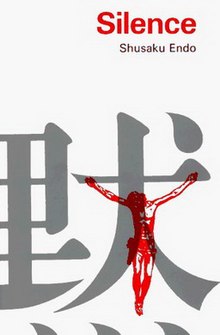This is part of the DR Book Collection.
 In preparation for an upcoming talk in church on “trials and their purpose,” I purchased Eastern Orthodox philosopher David B. Hart’s book The Doors of the Sea: Where Was God in the Tsunami?. Written after the massive South Asian tsunami in 2004, Hart addresses the most common objection to God’s existence: the problem of evil. Instead of intellectualizing, justifying, and rationalizing the evil and suffering we see and experience in the world, Hart condemns it. He reminds readers that Christ was sent to conquer death and all those things associated with it. In short, death, evil, and suffering play no role in God’s ultimate purposes because these are the very things Christ’s atonement and resurrection are meant to be victorious over. Hart movingly concludes his book with the following:
In preparation for an upcoming talk in church on “trials and their purpose,” I purchased Eastern Orthodox philosopher David B. Hart’s book The Doors of the Sea: Where Was God in the Tsunami?. Written after the massive South Asian tsunami in 2004, Hart addresses the most common objection to God’s existence: the problem of evil. Instead of intellectualizing, justifying, and rationalizing the evil and suffering we see and experience in the world, Hart condemns it. He reminds readers that Christ was sent to conquer death and all those things associated with it. In short, death, evil, and suffering play no role in God’s ultimate purposes because these are the very things Christ’s atonement and resurrection are meant to be victorious over. Hart movingly concludes his book with the following:
[F]ortunately, I think — we Christians are not obliged (and perhaps are not even allowed) to look upon the devastation of that day — to look, that is, upon the entire littoral rim of Andaman Sea and Bay of Bengal and upper Indian Ocean strewn with tens of thousands of corpses, a third of them children — and to attempt to console ourselves or others with vacuous cant about the ultimate meaning or purpose residing in all that misery. Ours is, after all, a religion of salvation. Our faith is in a God who has come to rescue his creation from the absurdity of sin, the emptiness and waste of death, and the forces — whether calculating malevolence or imbecile chance — that shatter living souls; and so we are permitted to hate these things with a perfect hatred.
…As for comfort, when we seek it, I can imagine none greater than the happy knowledge that when I see the death of a child I do not see the face of God, but the face of His enemy. It is not a faith that would necessarily satisfy Ivan Karamazov, but neither is it one that his arguments can defeat: for it has set us free from optimism, and taught us hope instead. We can rejoice that we are saved not through the immanent mechanisms of history and nature, but by grace; that God will not unite all of history’s many strands in one great synthesis, but will judge much of history false and damnable; that He will not simply reveal the sublime logic of fallen nature, but will strike off the fetters in which creation languishes; and that, rather than showing us how the tears of a small girl suffering in the dark were necessary for the building of the Kingdom, He will instead raise her up and wipe away all tears from her eyes — and there shall be no more death, nor sorrow, nor crying, nor any more pain, for the former things will have passed away, and He that sits upon the throne will say, “Behold, I make all things new” (pgs. 101, 103-104).
You can see a brief interview with Hart below discussing the problem of evil below.



 Brené Brown’s Daring Greatly made my
Brené Brown’s Daring Greatly made my  I bought Shūsaku Endō’s classic
I bought Shūsaku Endō’s classic  As some of my
As some of my  I don’t think I’ve ever mentioned this before on here, but, as some of you may have guessed, I go to therapy. I haven’t as of late for various reasons, but for a solid two years I went pretty much every other week. My interest in
I don’t think I’ve ever mentioned this before on here, but, as some of you may have guessed, I go to therapy. I haven’t as of late for various reasons, but for a solid two years I went pretty much every other week. My interest in  I’ve been a fan of British philosopher Roger Scruton ever since I stumbled on his BBC documentary
I’ve been a fan of British philosopher Roger Scruton ever since I stumbled on his BBC documentary  While Bill Watterson’s Calvin & Hobbes touched on childhood and life experience more generally, cartoonist Scott Hales delves into the details and nuances of Mormonism’s unique and somewhat odd culture while capturing the same kind of magic described above. His new graphic novel–
While Bill Watterson’s Calvin & Hobbes touched on childhood and life experience more generally, cartoonist Scott Hales delves into the details and nuances of Mormonism’s unique and somewhat odd culture while capturing the same kind of magic described above. His new graphic novel–